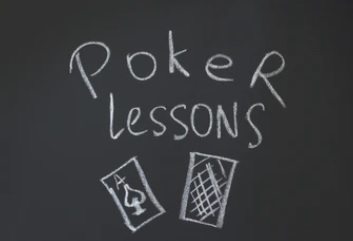A lot of my recent columns have been geared towards the intermediate crowd, and so this week we’re going to take a step back and look at a topic that a lot of beginner players have trouble with: 3-bet bluffing pre-flop. This is a critical part of today’s no-limit hold’em games, and if you just ignore it, then not only are you going to be leaving a ton of value on the table, you’re also going to be very limited in how far you can move up through the ranks.
Look, I realize that some of you are going to be a little afraid to try to expand your game with 3-bet bluffing. I’m going to try to handle this topic in a way that will handle all of your objections and show you exactly what you need to know to get your foot in the door with this particular type of play. For this reason, I’m going to advocate a fairly conservative approach that will give you time to get comfortable with the situations that come up before expanding and trying to maximize your value.
The 3-Bet Bluff in Simple Terms
It’s a $0.05/0.10 game and some guy raises pre-flop from the hijack seat to $0.30. It folds to you in the big blind, and you make a 3-bet to $1.10 with A5s. You’re doing this to get value in three different ways:
- Primarily, you’re getting value from the times your opponents folds pre-flop and you take it down.
- You’re also getting value from the times your opponent calls and you end up getting in profitable post-flop situations.
- You will get extra value out of your good 3-betting hands once your opponents know that you 3-bet with more than the nuts.
If you avoid 3-bet bluffing, then you’re going to be missing out on these three sources of value.
A Simple Guideline
In our above $0.05/0.10 example, we were betting $1.00 (the $0.10 big blind is already in the pot) for a chance to win the $0.15 worth of blinds and our opponent’s $0.30 raise for a total of $0.45. If you divide the amount that you’re putting into the pot by what the pot will be after your bet, you’ll get a good guideline for how often your opponent needs to be folding for you to make this worthwhile. In this case, you’ll get close to 70 percent. This is to be taken as a general guideline and not a concrete rule because the total profitability of your 3-betting will depend on how you play post-flop and some other factors. However, if your opponent is folding at least 70 percent of the time to your 3-bet, then you’ll usually be making a good bit of money if you don’t spew post-flop.
It might go without saying, but I’m going to say it anyway: Like any other type of bluff, you don’t want to do it too much against players who aren’t folding much. If a player isn’t folding often, then expand your 3-betting with value hands instead of bluffs.
Which Hands to 3-Bet Bluff With
There are two things that make a hand attractive as a 3-bet bluff. The first thing to consider is that you want it to be worse than the worst hands you would call with, but not by much. For example, if you are calling with 98s but not 97s, then 97s could be a better candidate hand for a 3-bet bluff than something random like 62s. The second thing to consider is that you could have blockers to some of the hands that he would continue with, and that can increase his folding percentage. For another example, if you hold A2, that’s going to get more folds than if you 3-bet with 62 because you keep your opponent from having hands that include aces quite as often.
The Flop Comes And We Don’t Have Jack
The scenario that most new players are afraid of when it comes to 3-bet bluffing happens when our opponent calls our 3-bet, the flop comes, and we don’t hit anything. What you need to realize is that this is basically the same as deciding how to play any other flop where you raised pre-flop and were called. The only differences are that the pot is larger in relation to the remaining stacks and that your opponent’s range is different since they were calling a 3-bet instead of calling a raise.
If you think that you are getting a lot of folds pre-flop, then don’t feel like you have to get fancy when the flop comes. Focus on high-advance scenarios like strong semi-bluffs and the times that you catch a hand, and you won’t have to worry too much about it since you’re getting plenty of value on your play overall in the first place. Don’t forget that all of the strong hands that you 3-bet for value are also in your range, so it’s not like your opponent just magically knows that you are bluffing this time.
Being Afraid of Being Vulnerable to 4-Bets
Another concern that new players tend to have is that they’re afraid of being vulnerable to 4-bets. If the betting happens close to standard sizes, then your opponent will need you to fold to a 4-bet about 60 percent of the time for it to be a profitable option.
Think about what this means for your range. If you are 3-bet bluffing 150 percent as often as you are 3-betting for value, then your opponent can still only break even with a 4-bet bluff. On top of that, your value hands will be getting extra value if your opponents decided that they needed to start doing this.
Start off with being conservative, and expand little by little as extend the size of your comfort zone and gain experience.
Submit your review | |









